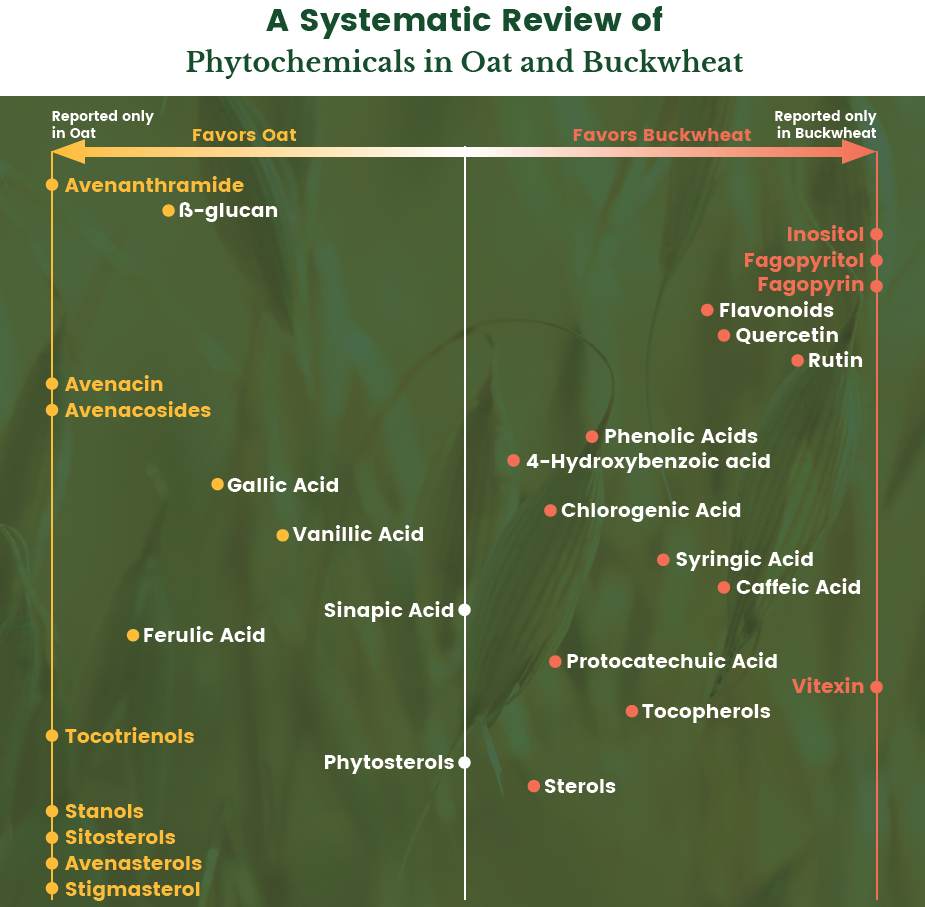Phytonutrients in Oats & Buckwheat
About this PDF
As part of the Research Spotlight series on WholisticMatters, “Phytonutrients in Oats & Buckwheat” compares two nutrient-rich crops: oat and buckwheat. These two crops have a lot in common when it comes to their phytochemical profile, but there are also a select group of phytochemicals for which each crop is known. For example, there are approximately 40 different types of avenanthramides found it oats, a polyphenol alkaloid not found in other cereal grains. On the other hand, buckwheat (which is naturally gluten-free and not actually related to wheat) contains quercetin and rutin.
This infographic was created from research published in the 2021 Food Chemistry paper “A systematic review of phytochemicals in oat and buckwheat.” The review identified 154 high-quality studies detailing the chemical composition of oat and buckwheat. Researchers reported 178 bioactive compounds in oat and 113 in buckwheat. Compound classes include phenolic compounds, flavonoids, polyphenolics, avenanthramides, tocols, phytosterols and fatty acids, polysaccharides, and saponins.
Learn more about both oat and buckwheat on WholisticMatters:




